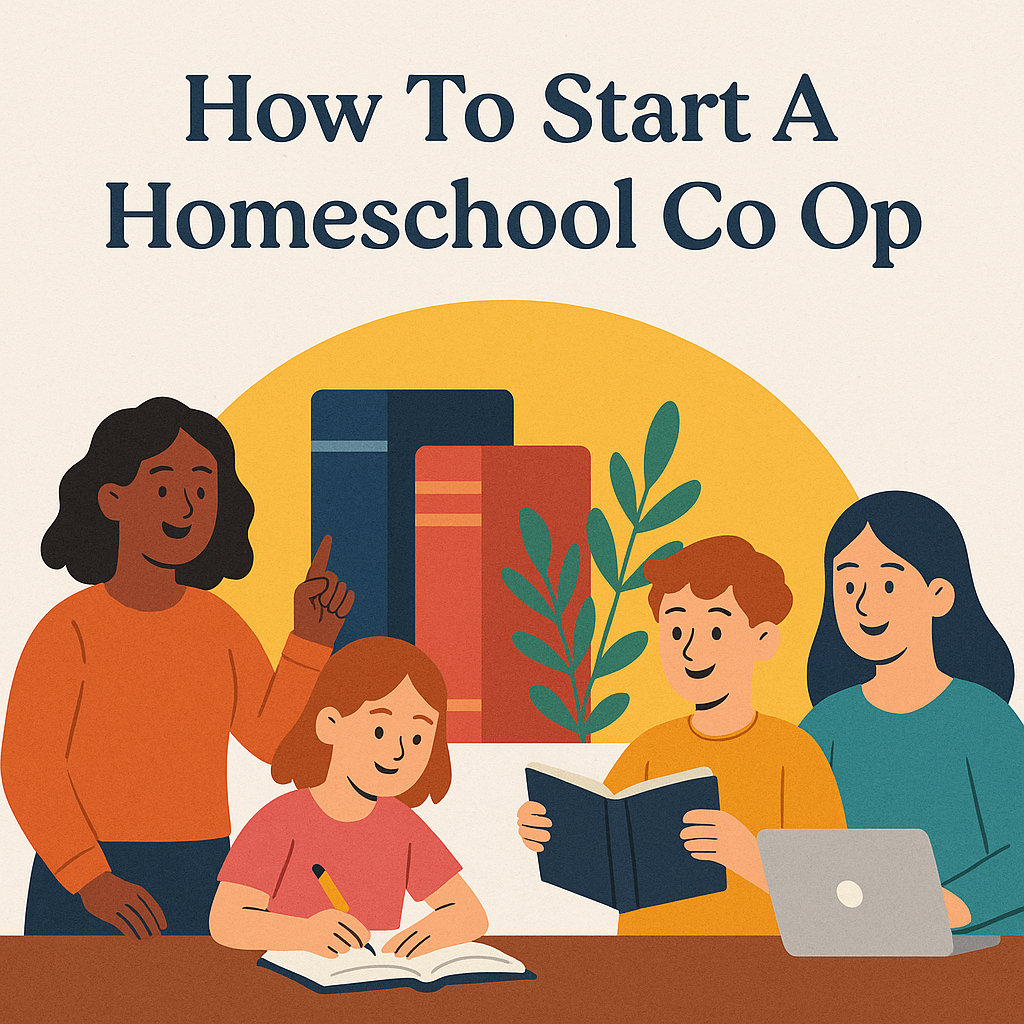Collaborative learning takes homeschooling to new heights. Imagine creating a space where families pool their strengths to build rich educational experiences. A homeschool co-op does exactly that—combining the flexibility of independent study with the energy of group activities.
These cooperative groups let parents share teaching duties while kids engage with peers. Whether meeting in homes or rented spaces, co-ops adapt to your community’s needs. They might focus on science labs, art classes, or specialized subjects that individual families can’t easily tackle alone.
Building a successful group starts with finding families who value teamwork. Shared goals and commitment ensure everyone contributes their skills. Maybe you’ll lead math lessons while another parent organizes field trips. The structure grows organically from what your group needs most.
Customization is key. Some co-ops serve specific age ranges or follow particular teaching philosophies. Others rotate locations or mix academic and extracurricular topics. Your group’s format should reflect the interests and schedules of participating families.
This guide simplifies the process of creating a thriving co-op. You’ll learn to handle logistics like scheduling, location hunting, and maintaining engagement. Discover solutions for balancing different learning levels and keeping the group dynamic positive year-round.
Key Takeaways
- Collaborative groups blend homeschool flexibility with social learning opportunities
- Successful co-ops rely on families sharing similar educational values
- Groups can focus on specific subjects, age ranges, or teaching methods
- Clear communication prevents scheduling conflicts and participation drops
- Shared resources reduce individual teaching burdens
- Regular evaluations keep the co-op aligned with member needs
Introduction to Homeschool Co-ops
Education becomes a team sport when families unite through homeschool co-ops. These collaborative groups blend home education’s flexibility with shared expertise, creating richer experiences than solo efforts can provide. Parents and kids work together to build customized environments that spark curiosity and connection.
What Is a Homeschool Co-op?
A co-op brings multiple families together to teach and learn as a team. Meetings might happen weekly in living rooms or monthly at community centers. Some focus on core subjects like math, while others prioritize art or outdoor exploration.
Parents take turns leading activities based on their strengths—a biologist might guide science labs, while a musician teaches rhythm games. This setup lets children benefit from diverse teaching styles and peer interactions. Groups range from five families sharing resources to larger networks organizing field trips.
The Purpose of Starting a Co-op
These cooperatives address common homeschooling challenges. They offer social opportunities often missing in solo setups. Kids collaborate on projects, debate ideas, and form lasting friendships.
For parents, splitting teaching duties lightens the load and introduces fresh perspectives. Resource sharing cuts costs on materials and event fees. Many families value the support network that develops naturally. As one parent notes, “Our co-op isn’t just about algebra—it’s where we troubleshoot curriculum choices and celebrate milestones together.”
Benefits for Families and the Community
When families unite, education transforms into collective empowerment. Cooperative learning setups deliver advantages that ripple beyond academics, strengthening bonds between participants and neighbors alike. Let’s explore how these partnerships create value through connection and resourcefulness.
Social Growth Through Shared Experiences
Structured group activities give children regular chances to collaborate. They practice teamwork during science experiments, debate ideas in history clubs, and build confidence through drama workshops. Peer interactions in educational settings mirror real-world social dynamics, preparing kids for future challenges.
Parents benefit too. One mom shares, “My daughter’s shyness faded after co-op art classes—she’s now leading group projects.” Mixed-age groups often form, letting younger learners observe older peers while teens develop mentorship skills. If you’re looking to tap into a growing niche with strong customer demand, this guide on how to start a permanent jewelry business offers a comprehensive roadmap for aspiring entrepreneurs.
Smart Resource Management
Shared costs make enriching experiences accessible. Consider these savings:
- Museum memberships split 5 ways cost less than individual family passes
- Bulk purchases of lab supplies reduce per-household spending
- Guest speaker fees become affordable when divided among participants
Expertise sharing multiplies learning opportunities. A parent’s engineering background might inspire robotics workshops, while another’s gardening skills could fuel botany lessons. Communities gain too—libraries and parks see increased engagement when co-ops host events.
How To Start A Homeschool Co-op
Launching a collaborative learning initiative begins with your closest connections. Tap into existing networks by contacting families from local park days or curriculum swaps. One parent recalls, “Our best members came through a Facebook post in our county’s homeschooling community.” Shared values matter more than group size—seek those who prioritize consistent participation.
Identify potential leaders who bring both enthusiasm and organizational skills. These individuals often emerge naturally during planning discussions. Core team members might handle scheduling, communication, or activity coordination. Remember, complementary strengths create balanced leadership.
Casual coffee meetups help assess compatibility before formal commitments. Discuss teaching philosophies, discipline approaches, and availability during these sessions. A trial project—like organizing a single field trip—reveals how well families work together.
Digital tools streamline early-stage coordination. Create a private group chat for brainstorming locations, potential subjects, and meeting frequencies. Many successful groups begin with bimonthly gatherings focused on specific skills, expanding as trust builds among participants.
Smaller groups often achieve better results initially. Three to five committed families can establish routines before welcoming new members. This approach allows for flexibility in testing different formats while maintaining manageable logistics.
Planning and Structuring Your Co-op
Crafting a successful learning collective requires thoughtful organization. Begin by mapping out your educational priorities and group capabilities. Will you focus on hands-on science experiments or rotate through various subjects each month? Your choices shape the curriculum foundation. Understanding the startup costs and licensing requirements is crucial, and our article on launching a successful car wash business breaks down each step clearly.
Educational Blueprint Options
Three main formats work well for collaborative groups:
| Format | Focus | Preparation Needed |
|---|---|---|
| Specialty | Single subject mastery | Expert-led materials |
| Rotating | Multiple topics | Parent sign-up system |
| Structured | Pre-made lesson plans | Curriculum purchases |
One mother shares, “We alternate between art history and chemistry labs—keeps everyone engaged.” Consider mixing formats quarterly to maintain excitement.
Teamwork Distribution
Clear role assignments prevent overload. Create a sign-up sheet showing:
- Teaching slots per family
- Setup/cleanup rotations
- Nursery volunteers by week
Track participation through shared calendars. This ensures fair workload distribution among members.
Health and Safety Essentials
Protect your group with written guidelines. Key elements include:
- 1:5 adult-child ratio for younger ages
- 24-hour fever-free rule before returning
- Emergency contact flowchart
Review policies quarterly. Adjust based on seasonal illnesses or space changes. Consistent rules help parents feel secure in the co-op environment.
Activity Ideas and Group Learning Experiences
Creative sparks fly when families combine their educational resources. Group settings allow children to explore subjects through hands-on activities that individual households might struggle to organize. From dissecting owl pellets to building solar ovens, collaborative projects turn abstract concepts into tangible discoveries.
Field Trips, Nature Walks, and Outdoor Learning
Exploring beyond classroom walls deepens understanding. Field trips to science museums or historical sites often offer group discounts—making rare experiences accessible. One parent notes, “Our visit to the planetarium cost half-price thanks to our co-op’s bulk booking.”
Weekly nature walks transform local parks into living laboratories. Kids track seasonal changes, identify native plants, and conduct water quality tests. These outdoor activities blend physical exercise with environmental science lessons.
In-Class Projects and Special Workshops
Shared spaces enable messy, memorable experiments. A robotics workshop might have teams programming Lego Mindstorms, while an art class collaborates on mosaic murals. Parents with specialized skills often lead sessions—a chef teaching knife skills or an engineer demonstrating 3D printing.
Popular workshop ideas include:
- Survival skills: Building shelters and purifying water
- Creative writing: Group storytelling with illustrated books
- Simple motors: Constructing working models from household items
These group activities foster teamwork while letting children explore potential interests. As one teen participant shared, “I never thought I’d like woodworking until we made birdhouses together.”
Finding a Suitable Location and Arranging Insurance
Securing the right meeting spot protects your group’s momentum while building trust. Three main options balance accessibility with practicality—each requiring different preparations.
Exploring Homes, Churches, and Community Centers
Member homes work best for intimate groups. Rotate hosting duties to share responsibilities fairly. Ensure families feel comfortable welcoming others into their space—some may prefer contributing snacks over opening their living rooms.
Local churches often provide classrooms or halls at minimal cost. Many welcome educational groups as part of their community outreach. Always confirm their insurance policies and cleanup expectations beforehand.
Public buildings like community centers handle larger gatherings. Budget for rental fees and key deposits. One coordinator notes, “We saved by booking weekday mornings when demand was low.”
Insurance safeguards your co-op against unexpected incidents. HSLDA’s website offers affordable group policies for registered members. Review coverage details annually as your location or activities evolve.
FAQ
What are the main benefits of joining a homeschool co-op?
Co-ops provide socialization opportunities, shared teaching responsibilities, and access to group activities like field trips or science labs. Families often save money by splitting costs for supplies, curriculum, or event fees while building a supportive community.
How do I find families interested in forming a co-op?
Start by connecting with local homeschool groups on social media platforms like Facebook or Meetup. Libraries, churches, and community centers often host events where you can meet other families. Word-of-mouth referrals are also powerful!
What subjects or activities work best for group learning?
Hands-on classes like art, science experiments, drama, or nature walks thrive in co-ops. Many groups rotate topics—one week might focus on a history workshop, while another includes a park day or guest speaker.
Do we need insurance to run a homeschool co-op?
Liability insurance is recommended, especially if using a rented space like a church or community center. Some locations include coverage in their rental agreements, but always verify this beforehand.
How often should a co-op meet?
Most groups meet weekly or biweekly. Consistency helps kids build friendships, but flexibility is key. Some co-ops run semester-based programs, while others organize monthly field trips or seasonal events.
Can co-ops include mixed-age groups?
Absolutely! Multi-age activities like nature studies, book clubs, or art projects encourage peer mentoring. For specialized subjects like math or writing, splitting into age-based smaller groups often works well.
What rules should we establish early on?
Clear policies on attendance, behavior expectations, and sickness protocols prevent misunderstandings. Decide how to handle conflicts, late payments, or last-minute cancellations upfront.
Are co-ops only for academic subjects?
Not at all! Many focus on enrichment—think robotics clubs, music classes, or hiking groups. Others blend academics with social events like game days or holiday parties to keep learning fun.







